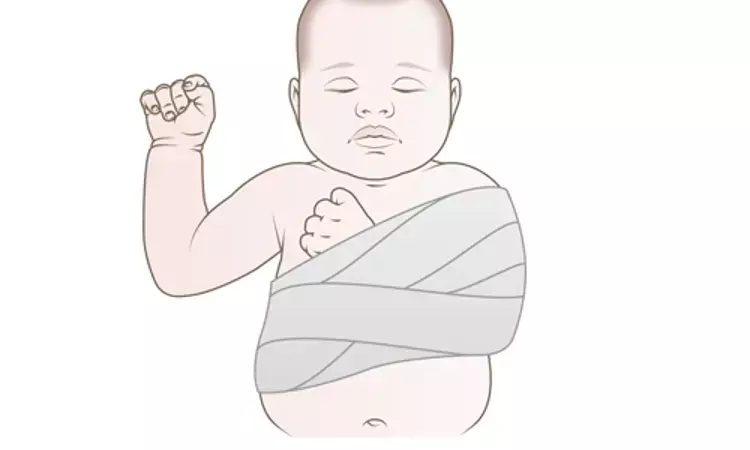- Home
- Medical news & Guidelines
- Anesthesiology
- Cardiology and CTVS
- Critical Care
- Dentistry
- Dermatology
- Diabetes and Endocrinology
- ENT
- Gastroenterology
- Medicine
- Nephrology
- Neurology
- Obstretics-Gynaecology
- Oncology
- Ophthalmology
- Orthopaedics
- Pediatrics-Neonatology
- Psychiatry
- Pulmonology
- Radiology
- Surgery
- Urology
- Laboratory Medicine
- Diet
- Nursing
- Paramedical
- Physiotherapy
- Health news
- Fact Check
- Bone Health Fact Check
- Brain Health Fact Check
- Cancer Related Fact Check
- Child Care Fact Check
- Dental and oral health fact check
- Diabetes and metabolic health fact check
- Diet and Nutrition Fact Check
- Eye and ENT Care Fact Check
- Fitness fact check
- Gut health fact check
- Heart health fact check
- Kidney health fact check
- Medical education fact check
- Men's health fact check
- Respiratory fact check
- Skin and hair care fact check
- Vaccine and Immunization fact check
- Women's health fact check
- AYUSH
- State News
- Andaman and Nicobar Islands
- Andhra Pradesh
- Arunachal Pradesh
- Assam
- Bihar
- Chandigarh
- Chattisgarh
- Dadra and Nagar Haveli
- Daman and Diu
- Delhi
- Goa
- Gujarat
- Haryana
- Himachal Pradesh
- Jammu & Kashmir
- Jharkhand
- Karnataka
- Kerala
- Ladakh
- Lakshadweep
- Madhya Pradesh
- Maharashtra
- Manipur
- Meghalaya
- Mizoram
- Nagaland
- Odisha
- Puducherry
- Punjab
- Rajasthan
- Sikkim
- Tamil Nadu
- Telangana
- Tripura
- Uttar Pradesh
- Uttrakhand
- West Bengal
- Medical Education
- Industry
Caesarean delivery brings risk of fractures & birth palsy for newborn: study

Obstetric fractures usually occur after complicated births and are sent to paediatric orthopaedics for treatment and follow-up. Clavicle fractures represent the most common orthopaedic birth injury, involving approximately 0.2 to 3.5% of births.
The authors chose to do a retrospective study to determine possible risk factors for this type of injury that may manifest in either delivery. The aim was to deepen the knowledge in order to have a better prediction and a better management of this condition.
The study was conducted with patients presented to Paediatric Orthopaedic ward of "Grigore Alexandrescu" Children's Emergency Clinical Hospital of Bucharest, Romania.
The following variables were analyzed in search for statistical significance: maternal age, height, antepartum weight, weight gain after pregnancy, urban/rural environment, parity, gestity, place of birth, public/private hospital, type of delivery, gestational age, presentation, shoulder dystocia, type of fracture, birth weight, gender, duration of labour and expulsion, APGAR score, and complicated/ straightforward fracture. A p-value less than 0.05 was considered statistically significant, with a corresponding confidence level of 95%.
• The authors followed 136 patients that were diagnosed with Allman type I clavicle fracture, 32 of them also having brachial plexus birth palsy (BPBP) type 1 (Duchenne-Erb).
• Natural birth with a pelvic presentation imposes a relative risk of 6.2 of associated pathology compared to cranial presentation.
• Caesarean delivery and cranial presentation increase the risk of related pathology by 5.04 compared to natural birth.
• Statistically, pelvic presentation is 5.54 times more likely to develop related pathology than cranial presentation.
The authors concluded that – "Caesarean delivery brings risks for the newborn and should be practiced only when necessary. It is possible to use predictive modeling in obstetrics in third-trimester evaluations. One may statistically predict risks of birth complications like fracture and BPBP. More data is needed, from larger study samples, to find new risk factors and validate our logistic regression models."
Further reading:
Obstetric fractures in caesarean delivery and risk factors as evaluated by paediatric surgeons
Alexandru Ulici,Alexandru Herdea et al
International Orthopaedics (2022) 46:2611–2617
https://doi.org/10.1007/s00264-022-05547-2
MBBS, Dip. Ortho, DNB ortho, MNAMS
Dr Supreeth D R (MBBS, Dip. Ortho, DNB ortho, MNAMS) is a practicing orthopedician with interest in medical research and publishing articles. He completed MBBS from mysore medical college, dip ortho from Trivandrum medical college and sec. DNB from Manipal Hospital, Bengaluru. He has expirence of 7years in the field of orthopedics. He has presented scientific papers & posters in various state, national and international conferences. His interest in writing articles lead the way to join medical dialogues. He can be contacted at editorial@medicaldialogues.in.


